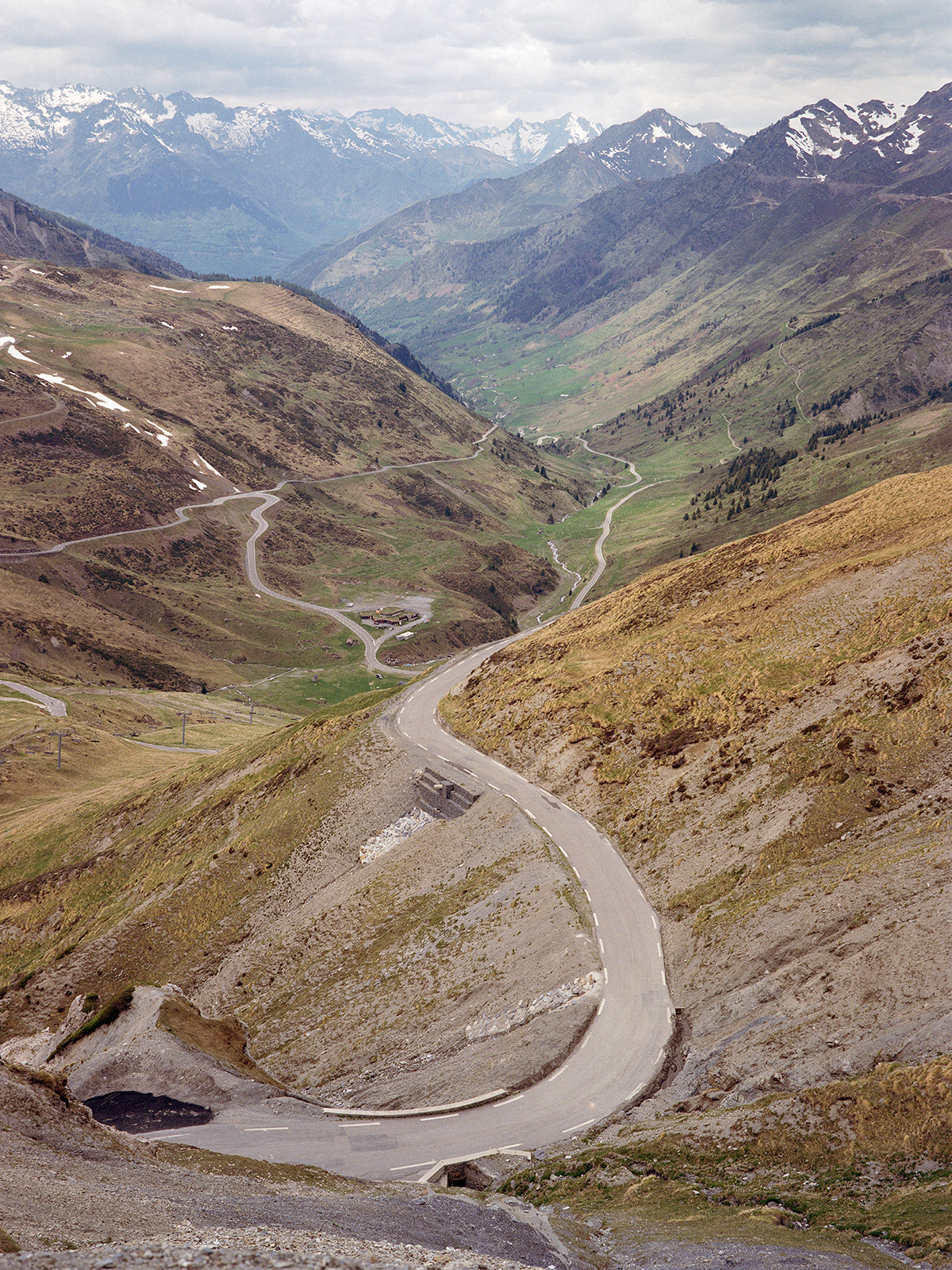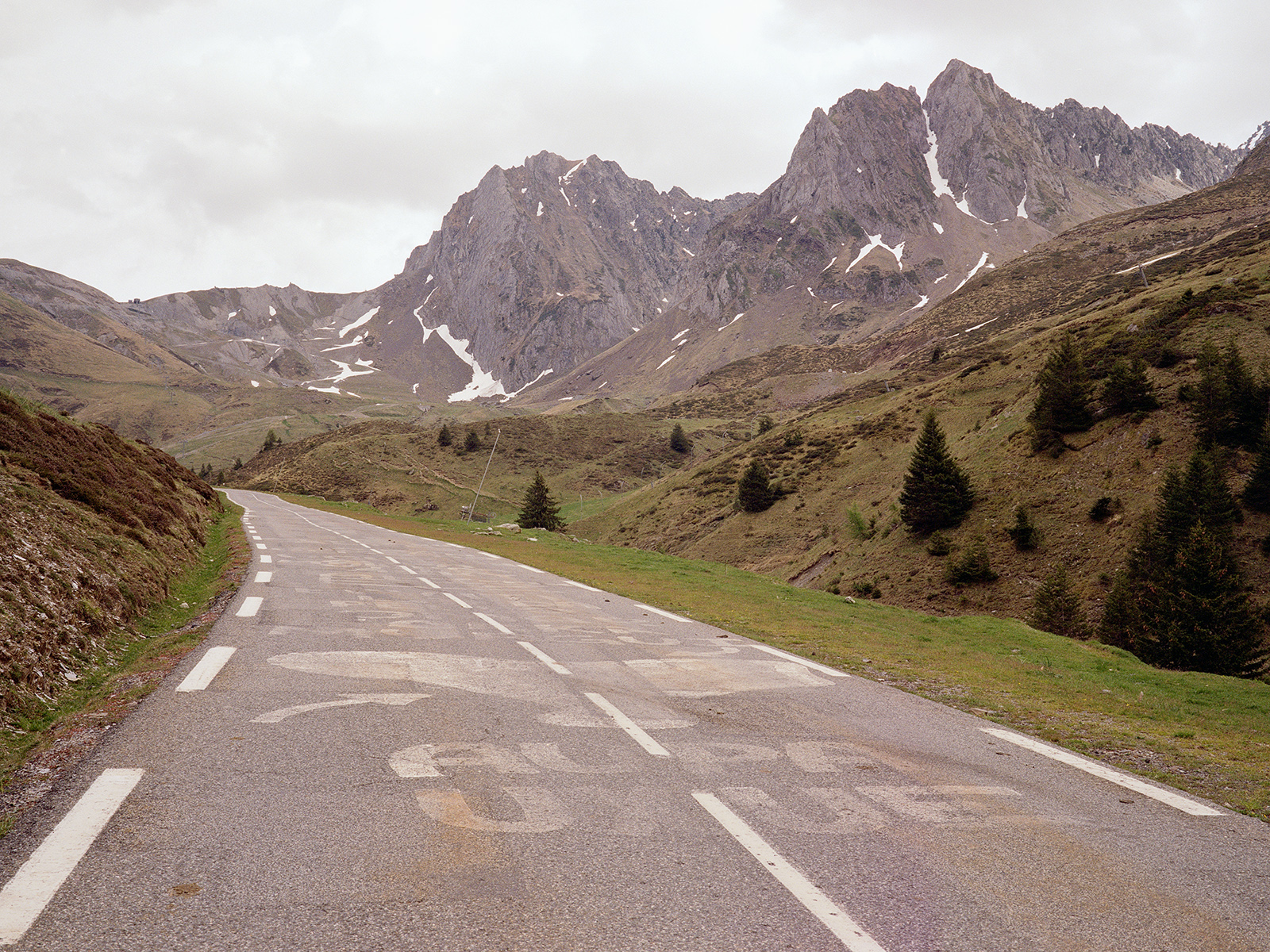
Ghosts of the Col Du Tourmalet
Photography and words by Fergus Coyle
This year’s Tour De France will feature the Col Du Tourmalet for a 90th time; more than any other mountain pass in the event's history. At the beginning of May, I set off from Lourdes to ride and photograph the 2115m pass to discover just what its appeal is. Out of season and closed to traffic, it gave a unique view of the climb, laying dormant with the ghosts of cycling past.


The Pyrenees were first included in the 1910 edition of the Tour De France, at the insistence of Alphonse Steinès, a colleague of the then organiser, Henri Desgrange. Steinés hired a driver to investigate the Tourmalet. After 16km, the car came to a halt and Steinés continued on foot.
Slipping on ice, he fell into a stream before clambering back to the road. Found hyperthermic and stumbling in the night, he was rescued and put up in the nearby village of Barèges.
Steines then famously sent a telegram to Desgrange: “Crossed Tourmalet. Very good road. Perfectly feasible”.
Steines then famously sent a telegram to Desgrange: “Crossed Tourmalet. Very good road. Perfectly feasible”.

I made my way along the Voie Vert from Lourdes to Argelés-Gazost then onto Luz-Saint-Sauveur at the base of the climb. Whilst ascending, another cyclist appeared behind me, eventually overtaking with exchanges of “Bonjour!” “Bon Route!”. We continued to leapfrog until eventually riding the “Voie Fignon” together - an old section of road open only to cyclists and walkers.

Octave Lapize was first over the pass back in 1910, although forced to walk and could be heard shouting “Murderers!” to the race officials. He went on to Paris wearing yellow, as did Eddie Mercx in 1969. Mercx was so confident during his inaugural tour that at the start of Tourmalet stage, he proclaimed: “When the others reach the finish line, I’ll have already showered. He also summited the Tourmalet first before riding the final flat 130km solo to indeed finish the stage eight whole minutes clear of his rivals. It is regarded as one of his best performances.

François had travelled from Quebec, ahead of his family, to tick off some classic alpine climbs. “You know it’s closed at the top, but apparently you can duck under the gate!”. This was news to me, but would explain why it was so quiet on the climb. As the Voie Fignon joined the main road, I could see that a barrier was indeed blocking traffic deep in the valley below. Leaving François to take pictures of his own, I continued up before stopping for lunch in the middle of the road. I felt blessed to have the Mountain to ourselves and in good weather.
I can remember watching Andy Schleck and Alberto Contador battle it out in the 2010 tour. Schleck had lost the overall lead to the Spaniard, dropping his chain on the upper slopes of the Port de Balès. They fought once more on the Tourmalet, with Schleck edging marginally ahead to take the stage. Schleck was retroactively awarded the 2010 Tour de France in February 2012, after Alberto Contador was found guilty of doping and handed a two-year ban.


Skirting around another barrier to reach the summit, I could see that any winter debris had now been cleared. Just a few workmen putting the finishing touches to the very slick looking and soon to be opened “Maison Du Tourmalet” visitors’ centre. Opposite, the old Tourmalet Restaurant was still closed for winter. François joined, as did a handful of walkers.
I set about documenting the sleeping topology of the mountain top; contradictory to the chaotic scenes of 2023: Jonas Vingegaard and Tadej Pogacar racing up through the pack, engulfed by hoards of wild spectators. Even Emmanuel Macron somehow made an appearance at the top.
Slowly descending back the same way, I photographed the views down the valley, which were once over my shoulder. Taking time to observe last seasons faded road level graffiti.
Slowly descending back the same way, I photographed the views down the valley, which were once over my shoulder. Taking time to observe last seasons faded road level graffiti.


GS: What does left field mean to you?
Fergus Coyle:
For me, Leftfield conjures up ideas around creative endeavours. Through a combination of cycling and photography, I often find myself moving towards the relative unknown.
Fergus Coyle:
For me, Leftfield conjures up ideas around creative endeavours. Through a combination of cycling and photography, I often find myself moving towards the relative unknown.
You can find more of Fergus’ work
HERE
HERE